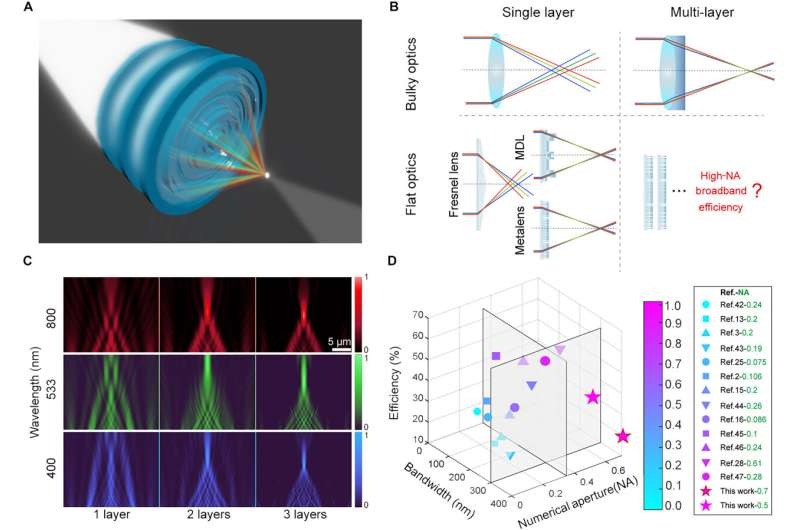Imagine a world where bulky, heavy lenses are a thing of the past. A world where powerful optics can be thin as paper, light as a feather, and capable of manipulating light in ways never before possible. This is the future promised by a groundbreaking new technology: 3D printed multilayer high-numerical-aperture achromatic lenses.
Overcoming Limitations through Multi-Layered Metamaterials
Developed by researchers at the University of California San Diego, these lenses represent a paradigm shift in optical engineering. Traditional lenses made from a single material often suffer limitations like chromatic aberration (blurring colors) and restricted numerical aperture (light gathering ability). 3D printed multilayer lenses sidestep these hurdles by combining multiple nanostructured metamaterials, each precisely designed to control specific wavelengths of light.
Thin, Lightweight, and Optically Superior
The result is a lens that is incredibly thin and lightweight yet offers superior performance over bulkier, traditional counterparts. These engineered flat lenses can focus light with higher precision, eliminate chromatic distortions, and even manipulate rays in ways previously impossible – opening up a whole new world of optical possibilities.
Revolutionary Applications Across Industries
The applications of this 3D printed optical technology are far-reaching. Here are just a few examples of how these lenses could reshape sectors:
- AR Glasses: Ultrathin form factors enabling sleek augmented reality glasses with stunningly vivid, undistorted visuals.
- VR Headsets: Smaller and lighter virtual reality hardware with sharper graphics and wider fields of view, heightening immersion.
- Medical Devices: Miniaturized microscopes and endoscopes for more precise, detailed visualization aiding diagnosis and treatment.
- Telecommunications: Faster optical components in communication devices enabling superior data transmission capacities.
The Path to Ubiquity
Of course, like any emerging technology, there are challenges in scaling 3D printed optical metamaterials. Manufacturing highly complex nanostructures with precision remains difficult and expensive. However, the research team is actively refining printing techniques and material compositions to improve high-volume production.
With continued commitment, this revolutionary optics breakthrough could become commonplace – transforming medicine, entertainment, communications and more. The boundaries of what’s optically possible are expanding thanks to human creativity and relentless innovation.
A Glimpse Into the Dawning Light-Bending Era
This leap in flat optics underscores that we are entering a new era of understanding, manipulating and harnessing light’s immense potential. As 3D printed lenses progress from prototypes to widespread adoption, previously inconceivable applications across industries will emerge. The future will undoubtedly be brighter thanks to this technology we’re only beginning to comprehend. Where will it blaze a trail next?
Let the light-bending discoveries continue! Please share your thoughts on 3D printed optics and their untapped potential in the comments below!










Add Comment